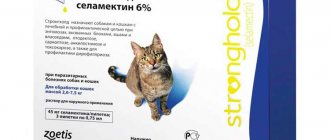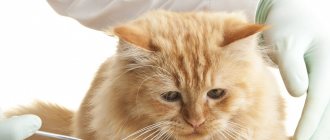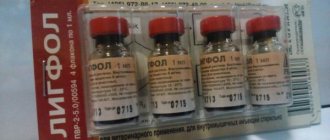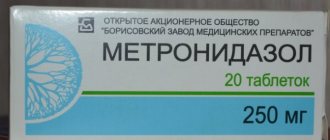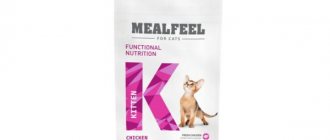Home » Useful Information
Reviews from veterinarians about anti-scratch products for cats are very contradictory.
Some consider soft claws a humane and safe way to solve the problem of scratches on furniture and on the body, others consider them an outrage against the natural instincts of the animal, and others consider them simply a glamorous decoration.
Let's try to figure out this seemingly simple question together.
Feedback from veterinarians regarding anti-scratch products for cats upsets many lovers of these affectionate animals.
On the one hand, thanks to silicone pads, the cat’s habit of sharpening its claws ceases to poison the joy of communicating with a four-legged family member.
On the other hand, all this talk about inhumane treatment of pets raises certain doubts and adds a fly in the ointment.
What people don’t come up with so that the cat’s instincts are realized and the domestic idyll is not disturbed.
Some make scratching posts with their own hands , others buy ready-made options built into the cat house , and still others buy multi-colored anti-scratch pads.
If you want to make a cat house with your own hands, we recommend reading the article
This is what silicone pads for cat claws look like
- 2 At what age can cats be given anti-scratch pads?
- 3 How often should you change claw covers?
- 4 Veterinarian's opinion
- 5 Veterinarian consultation
- 6 Vet tips
What are anti-scratch products for cats?
Anti-scratchers for cats are silicone, rubber or plastic attachments. The useful accessory was invented as an alternative to onychectomy - a bloody operation to surgically remove a claw and part of a pet's finger. A wide selection of pet products allows you to choose anti-scratch products not only by type of material, but also by the size of your pet, and even by color.
Can it be used for kittens from 2 months of age?
Veterinary experts do not recommend using protective covers for kittens over 2 months old. Manufactured products, even of the smallest size, do not fit well on children. Curious pets can easily pick them off and swallow them. Anti-scratch products can be used starting from 4-5 months of age for a kitten. For these purposes, the smallest attachments in size XS are produced.
When you do and don't need claw protection for cats
You can use cat claw protection in the following situations:
- The animal is not accustomed to using a scratching post and damages furniture, walls, and foreign objects.
- There are small children in the house, and the pet is not always peaceful when it comes to children's games.
- Aggressive and evil character of the cat.
- Prevention of scratching when your pet is infected with fleas, develops allergies and other dermatological problems.
- The owner has health problems. Scratches from pets can cause allergies and are unsafe for bleeding disorders.
You should not use nail guards if:
- The animal has an individual intolerance to the material from which the accessory is made.
- The pet has free access to the street. A cat needs claws not only to climb trees, but also to protect itself from dogs and aggressive relatives.
- The main task of a cat is to hunt mice. The use of anti-scratches in this situation will negate all the hunting abilities of the animal.
We recommend reading about how to help with an ingrown toenail in a cat. From the article you will learn about the causes of ingrown toenails, treatment of ingrown toenails at the veterinarian, and preventive measures.
Here's more information on how to trim a cat's claws.
Veterinarian consultation
Many people are afraid that their cat’s claws will itch under the pads.
This is not true, since the keratinized epithelium, which is the claws, cannot itch.
As an example, women’s nails under silicone or acrylic coatings do not itch.
Worries about the fact that the caps will need to be removed over time and that it will hurt the cat are also considered unfounded.
The overlays usually fall off on their own along with the regrown keratinized top layer of the claw.
Don't worry about your gait either.
Even if in the first hours the animal walks strangely and carefully, as if feeling the surface and raising its paws high, this will pass very quickly.
There is also no need to worry that your cat will not be able to hide her claws: properly applied covers will not prevent this habit.
People often ask what will happen if a cat bites off and swallows an anti-scratch.
Nothing bad will happen: the smooth cap, made of non-toxic silicone, will easily pass through the digestive tract and will not cause any harm.
Features of using claw pads for cats
Claw pads for cats have the following features:
- the size of the covers should be chosen taking into account the weight of the animal;
- Anti-scratch pads should only be glued with the special glue included in the kit;
- It is not necessary to put tips on all the claws; you can “disarm” only the front paws.
Pros and cons, possible complications of declawing protection for cats
Claw protection for cats has its advantages:
- cases allow you to protect valuables from damage;
- in case of a skin disease accompanied by itching, scratching is prevented;
- facilitate bathing and other hygienic or medical procedures for an obstinate cat;
- do not harm the pet;
- the covers can be put on the claws yourself;
- are inexpensive.
Anti-scratch pads also have their disadvantages:
- independent care of hair and ears becomes impossible;
- a cat with access to the street may become a victim of aggressive relatives or dogs;
- The animal cannot cope with the task of a mouser.
Watch this video about what anti-scratch products are, their advantages and disadvantages:
Myths about nail caps
Many myths about nail caps have not been confirmed:
- Myth No. 1. The devices prevent the animal from walking. Correctly sized and applied silicone pads do not affect the pet's gait. At first, out of habit, the cat may move uncertainly, but soon its former grace returns.
- Myth No. 2 . A cat cannot retract its claws if they are covered with covers. If the instructions are followed, the soft caps cover only 2/3 of the length of the claw and do not prevent their retraction.
- Myth No. 3 . Anti-scratch products are harmful to health. Properly selected and worn covers are safe for the cat. In rare cases, the adhesive used to secure them can cause an allergic reaction.
Cat's reaction to nail covers
When using claw covers for the first time, the cat’s reaction can be very negative: some cats try to get rid of an unknown object using their teeth. However, the durable material from which the device is made protects it from furry vandals.
The cat's gait may change. As a rule, animals quickly get used to the presence of caps on their nails and after a day or two they completely forget about their existence.
In rare cases, some pets may develop an allergic reaction to the material from which the protective accessory is made.
Are anti-scratch guards harmful to cats and who should not wear them?
The opinion that anti-scratch products are harmful for cats in most cases is due to their illiterate use. Over many years of foreign practice, no cases of threat to animal health have been identified when used correctly.
You cannot put attachments on the claws of cats that have access to the street and in case of individual intolerance to the material. The minimum age for kittens to use anti-scratch products is 4 months.
Reviews from veterinarians
Reviews from veterinarians about anti-scratch products are in most cases positive. If the owner follows the instructions for their use, experts consider this invention safe for the health of the animal. Some veterinarians have expressed the opinion that false nails prevent the cat from realizing its natural instincts and make grooming more difficult.
Reviews from owners and veterinarians
Sometimes cat owners devote so much time and effort to caring for their pet that it becomes difficult not to share their experience with others
There are many online forums devoted to topics about cats and cats. Cat breeders share their victories and disappointments, experiences and knowledge. And sometimes inexperienced pet owners just need advice. Few owners know about anti-scratches. Those who have already tried to use them are either satisfied with the device (and praise it) or disappointed (and criticize it). Some people who tried anti-scratch products got completely unexpected results.
I glued these to my cat, they are great. What’s funny is that I haven’t even run out of one box, but I stopped gluing them to him, I just continue to cut them, because he’s used to his nails not being scratched and has stopped even tearing up rugs. But I glued them to him from a young age. When you glue, make sure that the glue with the cap does not stick to the finger, otherwise the nail will grow and it will hurt the cat.
Forum user
https://m.woman.ru/home/animal/thread/4363561/https://m.woman.ru/home/animal/thread/4363561/
It often happens that after improper use unpleasant consequences occur. And the point here is not in the shape of the caps, or even in the quality of the glue. It’s just that every new item always evokes many different emotions. And here it’s up to you to decide whether to use it or not.
These anti-scratches are not needed, I was convinced from my own experience. I bought them for my cat, now I am suffering both myself and the cat. She took off all these caps, I didn’t re-sculpt them so as not to torture the animal, but one of her caps couldn’t be removed, and the nail festered. Today I wanted to take her to the vet, but Sunday is a day off, and in the evening I’m going on a business trip until Friday, how will my cat be here without me.
tory11, forum visitor
https://www.zoovet.ru/forum/?items=20&page=2&tem=307273&tid=18
Types of nail tips
Nail tips come in different types: silicone, rubber and plastic. A variety of colors has a practical meaning - the owner can see if the cover is lost, and it is convenient to find it in the room.
Advantages of using silicone pads
Silicone pads are the most popular among owners, since the material rarely causes allergies, adheres well and does not hinder the natural movements of the animal.
How to make anti-scratch for a cat with your own hands
If desired, the owner can make anti-scratch bars for a cat on his own, using silicone and polypropylene.
Watch this video on how to stick anti-scratch pads on your cat yourself:
The benefits and harms of caps
Any pet product has both positive and negative characteristics. This is explained by the peculiarity of mustaches, their individual needs and character, as well as the preferences of the owner.
Undeniable advantages
The positive aspects of wearing silicone pads are obvious, and there are quite a lot of them. The main thing is that the mustache normally perceives their presence on its paws and does not try to chew them off. Advantages of devices:
- keeping furniture, walls and curtains in good condition;
- lack of possibility of causing injury to a person;
- Can be used at any age.
When worn correctly, these cute little silicone things won't cause any discomfort to your furry friend. Over time, he will stop paying attention to them, and then the owner will be completely calm about the safety of his home.
Possible disadvantages
Of course, there are also negative sides to using tips. However, they can be avoided with the correct selection of accessories. It is important to consider not only the attractive appearance of the product, but also how comfortable the mustache is.
The disadvantages that may arise include:
- fragility (maximum month, and average service life - 2 weeks);
- different period of adaptation - the cat may never get used to the innovation;
- they squeak unpleasantly or knock on the floor when walking or burying the tray;
- possible deformation of the nail plates, their separation.
Fluffy purrs, like people, have different mentalities. Therefore, the period of adaptation for some pets may take a couple of weeks, while others will forget about the caps in just a couple of hours.
Age restrictions
Manufacturers of products for mustachioed consumers claim that there are no restrictions on the use of stickers. However, veterinarians do not agree with this. In their opinion, it is not advisable to use kits for kittens up to six months of age. Their nail plates themselves are very soft and easily wear off when walking or playing.
Nail caps are not useful for older cats. Old people usually lose interest in curtains and pieces of furniture, so there is no point in protecting them.
The same can be said about free-ranging animals. An individual who spends a lot of time outdoors will not be able to climb a tree or protect itself from enemies if cute accessories are put on it.
Nails for cats: sizes
Nails for cats should be selected taking into account the size:
| Anti-scratch size | Pet weight in kg |
| XS | for kittens aged 4-6 months |
| S | if a young animal weighs from 2.5 to 4 kg |
| M | for a cat weighing from 4 to 7 kg |
| L | for large individuals whose weight exceeds 8 kg |
When choosing an accessory, you should focus on the pet’s weight so that the anti-scratch pads are securely attached to the claw.
Duration of use
Protective accessories fall off the paws on their own as the nail plate grows. Therefore, their service life is related to the health, lifestyle and behavior of the cat. On average, the period of wearing the kit lasts from 2 to 4 weeks, and sometimes reaches 2 months.
In some cases they may be lost. The eared friend leaves them in the long pile of the carpet or chews them off.
How to put on your cat's nails
You should put false nails on your cat after the claws have been trimmed. If separation of the stratum corneum is observed, then it is necessary to trim the surface with a file.
How to properly glue a cat's nails
The following instructions will help you glue your cat’s nails correctly:
- prepare 5 silicone caps from the package;
- apply a small amount of glue into the cavity of the nozzle (no more than 1/3 of the volume);
- disinfect the claws on the cat’s paw with an antiseptic;
- Having pressed on the crumb, extend the claw and place the cap on it, gently pressing it on all sides;
- similarly glue attachments to all the pet’s claws;
- when the anti-scratch for the cat is glued, the animal should be held so that the glue sets, and after 10-15 minutes the cat with false nails can be released;
- Glue from the owner's fingers can be removed with nail polish remover.
If the pet is mischievous and breaks out, then you can attract an assistant and wrap the cat in a blanket for the procedure.
Anti-scratch for cats: instructions on how to use
There are no special instructions for using anti-scratch pads for cats; the animal simply wears them until they either rip them off or they fall off along with the renewal of the nail. If your pet chews and eats the cover, it’s okay. It will come out naturally without damaging the walls of the stomach and intestines.
Anti-scratch glue
Anti-scratch glue is included with the cases. A non-toxic product is used to attach silicone tips. In rare cases, the glue used to attach false nails can cause an allergy in your cat.
How to remove anti-scratch pads from a cat's claws
You can remove scratch guards from your cat’s claws when the stratum corneum of the claw grows back. In this case, the nozzle disappears on its own. This happens after about 1-2 months, depending on the intensity of the natural processes of claw regrowth in the cat.
If you need to remove them a little earlier, then you need to carefully trim the tip of the cover and pull it off.
Watch this video on how to reuse anti-scratch pads:
How to use
The first attempt to use overlays is not always successful. But this does not mean that you should give up silicone caps - you should be persistent and not give up.
Preparing animal claws
To carry out the first stickers, it is important to enlist the support of one of the family members. This will make the first attempt more successful and less traumatic.
First, you need to carefully examine the claws of your furry friend. They often differ in length, so the tip is tried on each finger separately.
A little pressure is applied to the paw pad so that the cat opens it, after which 2-3 mm of the claw is cut off with special nippers. The cut can be sharpened with a soft file, then there will be no sharp edges left.
Next, try on the overlay. It is important to make sure that it is pressed tightly and that there is 2 mm left to the base of the claw. Tips that are too long can be shortened slightly to make them easier to wear. To do this, the edges are trimmed with nail scissors.
In long-haired cats, long fur between the toes often gets in the way. In order not to stain it with glue, it is recommended to cut off any protruding hairs immediately before the procedure.
Algorithm for gluing procedure
Detailed instructions on how to glue anti-scratch pads to cats' claws are included with each kit. It is the same for protective sets of any size and color. The gluing algorithm looks like this:
- Glue is poured inside the lining, which should fill no more than half of it.
- By pressing on the pad with your fingers, you need to release the claw so that it appears at its full length.
- Step back 2 mm from the base and put on the tip, avoiding any glue getting on the fur.
- Hold for up to 10 seconds for better adhesion.
- Do not let go of your pet for 5-7 minutes so that the glue dries completely and sets.
During the procedure, the cat should experience a minimum of discomfort. Otherwise, re-sticking will not arouse positive expectations in him, and then it will be difficult to force him to this procedure.
Precautionary measures
It is more convenient and safer for the owner to use protective nails only on the front paws of the pet. This is also rational - it is with them that fluffies cause harm to surrounding objects.
The hind legs can be left alone. As a last resort, they can be filed or lightly trimmed.
During the procedure, the mustachioed friend must be securely fixed so that he cannot harm the person, run away during the procedure, or get dirty in the glue. It is better to stick the caps together: one holds, the other performs manipulations. You can’t put too much pressure on your pet, much less cause him pain.
After complete drying, watch your pet so that he does not actively chew the silicone. Distract your furry one with a treat or game.
Do not let the glue come into contact with your own hands or the cat's fur. The glue will be difficult to wash off, so it is better to use gloves or an old blanket in which you can wrap a restless animal.
Anti-scratch alternative
An alternative to anti-scratching can be a cat repellent spray, training the animal to use a scratching post, or special socks.
Anti-scratch spray
Anti-scratch sprays contain repellent substances, such as essential oils, which furry creatures do not like. The most popular repeller sprays among owners are Beaphar Stop-it Cat, Biovax, Antiscratch (True Friend) and Antiscratch pheromones for cats.
Scratchy
A scratching post or scratching post is a device for grinding down claws in apartment living conditions. You can purchase a horizontal or vertical modification at a pet store. Most often, jute rope, sisal, and corrugated cardboard are used for its production. Some pets will like a wooden scratching post.
Getting used to using the device will not be difficult if you buy a finished product specially impregnated with aromatic agents.
How often do you need to change the pads?
You should not remove the caps yourself, especially if this is not associated with a threat to health and life. The additional manipulation of removing the tips will cause further stress for the cat. Objective factors that require ridding the animal of protective kits are:
- allergic reaction;
- improper gluing;
- prolonged nervousness.
It is important to understand that this is not only decoration. They cannot be changed when the owner is tired of the appearance. A person’s whim is not a reason to subject an animal to an unnecessary procedure.



